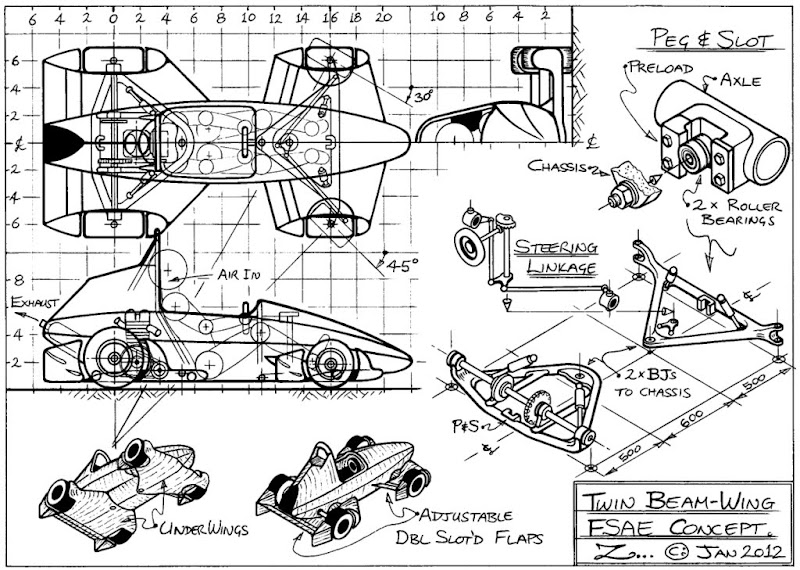Originally posted by Z:
A few weeks ago on the
"suspension for spool" thread I said I would post a sketch of a Twin Beam-Wing concept. I think this is a more suitable thread, so here it is (warts and all

).

(Edit: Made image bigger.)
Main features:
* This is an "aero above all" car. Everything else is there just to support the aero. I figure "drive on the ceiling" at less than maximum FSAE speeds (ie. DF=W at <100kph, (maybe <70kph?)). And more is possible!
* Aero is direct acting on the wheels, and easily adjustable for F/R balance via the flaps. Since wings are close to ground, and with wheels as skirts/end-plates, drag is low (no induced drag). The streamlined fuselage and wheel pods also lower drag for good economy.
* The aero centres of pressure are unlikely to be exactly above wheel axle lines, so some force acts on chassis through BJs causing some pitch/heave. This can be fixed by either; a) not worrying about it, b) reshaping the wings, or c) interconnecting the wings with two torsionally flexible spars running alongside the chassis and attached flexibly to the beams on their axle lines. Extending this last solution sideways gives a full width "live" undertray.
* Finally, a first year or "limited resource" team can do this car without the aero. Use a RE, B&S, or similar engine and you have a simple lightweight car that is quicker to build than the usual wishbones-and-pull/pushrods&rockers-everywhere cars. And, all other things equal, it will have high grip and benign handling because of soft springs with no camber change (not possible with normal independent suspensions).
Comments and criticisms welcome!

Z
).





 Reply With Quote
Reply With Quote
